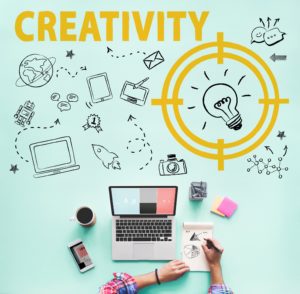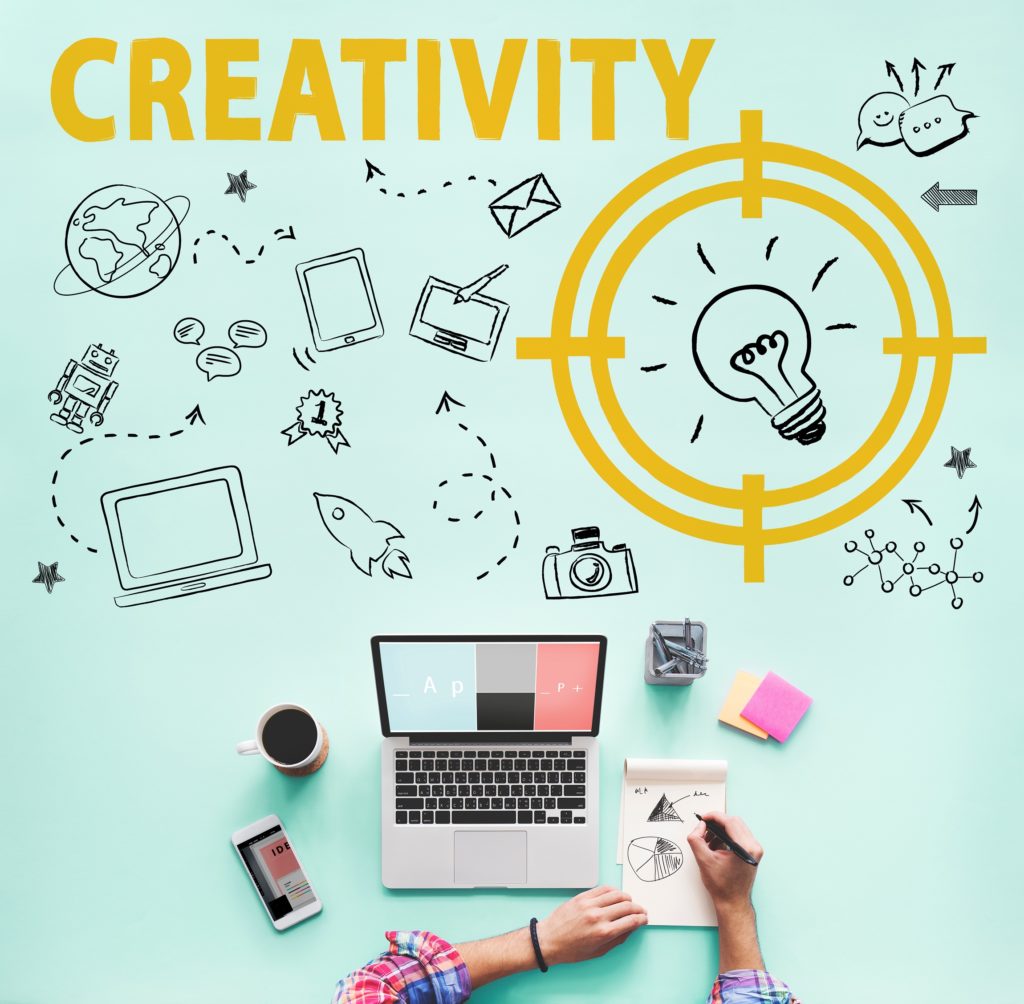 While creativity is important for individuals who work in the arts, it is just as necessary in business. Without it, businesses will become stagnant and unable to compete in an evolving marketplace. Research shows that 82 percent of executives agree that creativity offers direct benefits including increased revenue and greater market share. When prioritized and nurtured, creativity fuels innovation, challenges old ways of thinking and opens doors to new opportunities.
While creativity is important for individuals who work in the arts, it is just as necessary in business. Without it, businesses will become stagnant and unable to compete in an evolving marketplace. Research shows that 82 percent of executives agree that creativity offers direct benefits including increased revenue and greater market share. When prioritized and nurtured, creativity fuels innovation, challenges old ways of thinking and opens doors to new opportunities.
What Is Creativity?
Creativity is a mindset that involves the ability to generate original, valuable and meaningful ideas, concepts or solutions through a process of imaginative thinking, problem-solving and openness to new possibilities. It is a fundamental human ability that fuels innovation, productivity, self-expression and growth.
Creativity is an area that continues to be researched and studied by those who are interested in maximizing human potential. “Scientists are continuing to uncover encouraging evidence that engaging in creative activities—from painting to potting plants to planning parties—is beneficial to your mental health and well-being,” says psychologist Brad Brenner. “The way the brain acts during creative activities is similar to the experience during meditation, mindfulness, and yoga exercises.” Such activities are proven to help an individual maintain calm and contentedness while blocking out external stimuli. Studies about creativity show that practicing creative acts boosts the immune system, reduces risk for dementia and improves overall cognitive function.
Creativity is also one way to achieve “flow state,” which is valuable for any professional who seeks to balance productivity, create solutions and reduce stress. According to the American Psychological Association (APA) definition, flow involves a feeling of effortlessness that results in pleasure, where time seems to disappear, and we become fully immersed in the present moment. In a state of flow, we accomplish tasks quicker and with better results. Even better, flow leaves the doer with an “after-glow” effect from neurotransmitters like dopamine and serotonin, which lower cortisol levels, thereby reducing stress. Creativity can unlock a state of flow. So, the question is: how do we infuse creativity into our daily work lives?
Five Ways to Inject More Creativity into Your Workday
With the proven connection between creativity, improved mental health, innovation and productivity, practice these five steps to bring more creativity to your daily workday:
1. Take creative breaks.
Studies have proven that taking breaks throughout the day can reduce or prevent stress, help maintain performance and reduce the need for a long recovery at the end of the day. Schedule short breaks throughout your workday to engage in creative activities. This could involve sketching, brainstorming ideas for a personal project or keeping a creative journal. Whatever you choose, set aside a few minutes each day to serve as a personal outlet for self-expression, allowing you to process emotions and explore new ideas. By incorporating brief, low-stakes creative opportunities throughout the day, you can refresh your mind and enhance overall productivity.
2. Find inspiration in nature.
Numerous studies highlight the connection between nature and creativity. Take time to step outside and connect with the outdoor environment on a regular basis. Whether taking a walk on a break or choosing an external setting to work from, nature has a way of providing a fresh perspective and invigorating our creative spirit.
3. Create an inspirational workspace.
Surrounding yourself with a space that fosters creativity can have a significant impact on well-being and productivity. Consider adding décor that inspires you, such as artwork, plants or even colorful office supplies. Alternatively, a muted environment can reduce distractions. Whatever your preference is, a visually appealing environment can stimulate your imagination and boost creative energy. Similarly, a visually bland or cluttered environment can stifle creativity and productivity. According to Nettie Owens, founder of The Momentum Accountability Program, when organizing a workspace, “your focus should not be on the organizing project or the clutter or your current lack of productivity. Instead, writes Owens, “focus on the results that appear when you create an environment that feels open and available. Take a moment now to think about how you feel and how your space feels when it is clear.”
4. Embrace collaboration.
Sharing ideas, engaging in ongoing feedback, and working with cross-functional teams can generate new perspectives and stimulate creativity. Collaborative projects foster a sense of community and provide an opportunity to learn from peers. When we collaborate, whether asking a colleague for one-time input or engaging in consistent, creative brainstorming sessions, we’re more likely to produce innovative solutions.
5. Frequently try something new.
Just as working with others helps prompt original ideas, new experiences widen your perspective. By staying on top of current opportunities, technologies, tactics or techniques, it’s possible to discover potentially creative solutions that are outside the norm. Don’t hesitate to step out of your comfort zone and explore a skill set or solution you’ve never tried before. The act of challenging yourself creatively can unlock transferable skills or hidden talents that produce fresh results.
Harness Your Creative Superpower
Being creative is often regarded as a natural talent, a mysterious and sometimes elusive superpower that resides within a select few. Fortunately, creativity is a skill that can be learned and developed. By incorporating simple and enjoyable practices into our daily lives, it’s possible to fuel imagination and inspiration both personally and professionally. Engaging in creative activities provides a much-needed break from the demands of our busy lives. It also promotes emotional well-being, boosts cognitive function and enhances overall quality of life. When creative skills and mindsets are encouraged, they transfer to professional settings, where innovative solutions, passion and happy employees prompt individual and business success.

